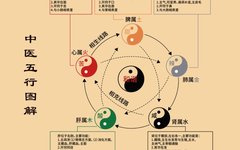
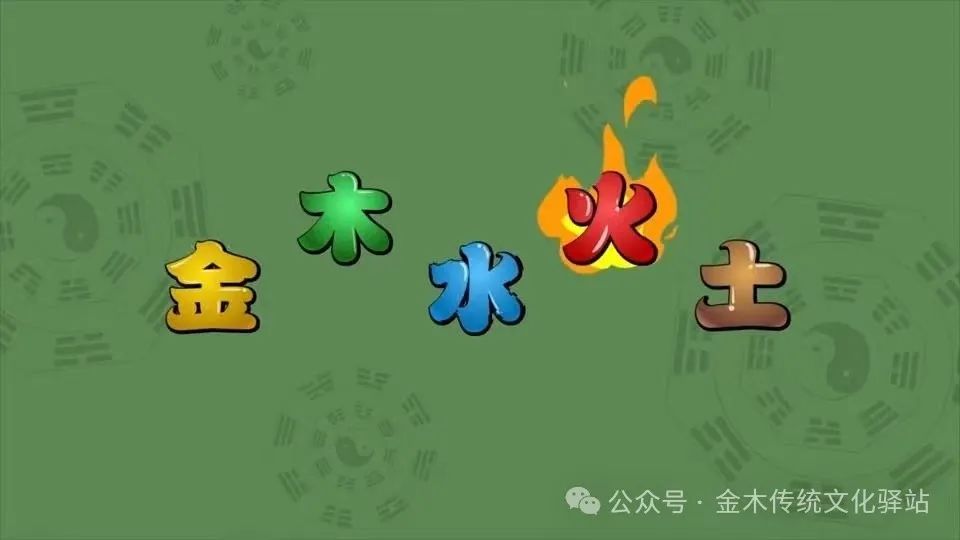
1. The Five Elements1. Origin of the Theory of Five Elements:The Theory of Five Elements is the essence of traditional Chinese culture, referring to the movement of five fundamental substances: Wood (growth, gentleness, smoothness), Fire (warmth, rising, brightness), Earth (transformation, support, acceptance), Metal (cleansing, refinement, contraction), and Water (coolness, nourishment, downward flow).Ancient Chinese people recognized that Wood, Fire, Earth, Metal, and Water are essential basic substances through long-term life and production practices. This understanding extends to the idea that all things in the world are generated from the movement and transformation of these five basic substances. There exists a relationship of mutual generation and restriction among them, maintaining a dynamic balance through continuous cycles of generation and overcoming, which is the fundamental meaning of the Theory of Five Elements.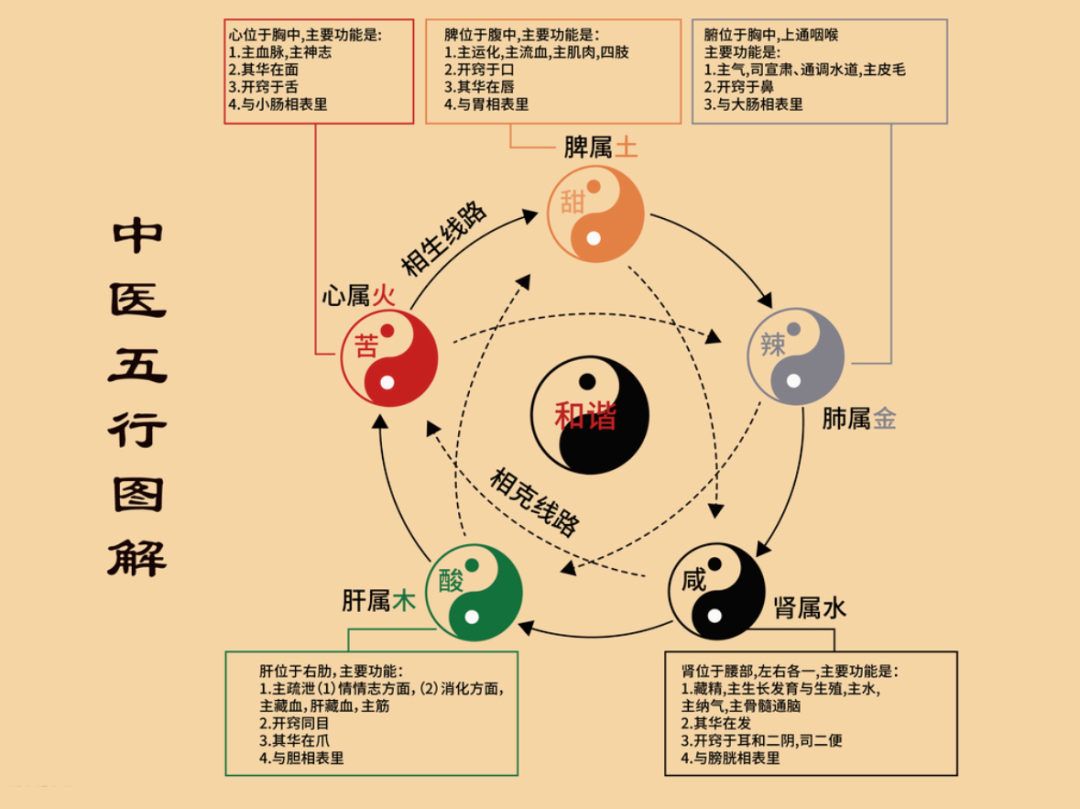
2. The Generative and Overcoming Relationships of the Five Elements:
The Theory of Five Elements posits that there are generative (sheng) and overcoming (ke) relationships among the five elements. The generative and overcoming relationships can explain the interconnections between things, while the relationships of multiplication (cheng) and insult (wu) can represent the mutual influences when the balance is disrupted.
Generative relationships refer to mutual support and growth.The order of generation among the five elements is: Wood generates Fire, Fire generates Earth, Earth generates Metal, Metal generates Water, and Water generates Wood.
Overcoming relationships refer to mutual restraint and limitation. The order of overcoming among the five elements is: Wood overcomes Earth, Earth overcomes Water, Water overcomes Fire, Fire overcomes Metal, and Metal overcomes Wood.
Generative and overcoming relationships are inseparable; without generation, things cannot occur or grow; without overcoming, things cannot maintain normal coordinated relationships. Only by maintaining a dynamic balance of generation and overcoming can things occur and develop normally.2. The Five Elements and the Five Organs
Traditional Chinese Medicine (TCM) believes that the human organic whole is a highly complex unity centered around the five organs, primarily involving the six fu organs, with meridians serving as a network connecting bodily tissues and organs, forming five major systems. This is part of the systems theory in TCM.Therefore, discussing TCM health preservation cannot avoid mentioning the intrinsic connections and mutual nourishing relationships among the five organs.
Wood → Fire → Earth → Metal → Water; Liver → Heart → Spleen → Lung → Kidney
For example: Wood generates Fire, meaning Liver Wood nourishes Heart Fire; the Liver stores Blood, and the Heart governs blood vessels. The normal function of the Liver’s blood storage supports the Heart’s function of governing blood vessels.
Fire generates Earth, meaning Heart Fire warms Spleen Earth; the Heart governs blood vessels and spirit, while the Spleen governs transformation and blood production. The normal function of the Heart’s blood vessels ensures that blood can nourish the Spleen; thus, the Spleen can perform its functions of transformation, blood production, and blood governance.
Earth generates Metal, meaning Spleen Earth assists Lung Metal; the Spleen can benefit Qi, transform Qi and Blood, and transport essence to nourish the Lung, promoting the Lung’s function of governing Qi, ensuring its normal dispersal and cleansing.
Metal generates Water, meaning Lung Metal nourishes Kidney Water; the Lung governs cleansing, and the Kidney stores essence. The Lung’s Qi descending helps the Kidney store essence, receive Qi, and govern Water.
Water generates Wood, meaning Kidney Water nourishes Liver Wood; the Kidney stores essence, and the Liver stores Blood. Kidney essence can transform into Liver Blood, assisting the normal function of the Liver. This mutual nourishing relationship among the five organs is explained using the generative theory of the Five Elements.Using the overcoming relationships of the Five Elements to explain the mutual restraint among the five organs:
For example: the Heart belongs to Fire, and the Kidney belongs to Water; Water overcomes Fire, meaning Kidney Water can restrain Heart Fire. If Kidney Water ascends to the Heart, it can prevent excessive Heart Fire.
The Lung belongs to Metal, and the Heart belongs to Fire; Fire overcomes Metal, meaning Heart Fire can restrain Lung Metal. Excessive Yang heat from Heart Fire can inhibit the Lung’s cleansing function.
The Liver belongs to Wood, and the Lung belongs to Metal; Metal overcomes Wood, meaning Lung Metal can restrain Liver Wood. Excessive cleansing Qi from the Lung can inhibit the Liver Yang’s hyperactivity.
The Spleen belongs to Earth, and the Liver belongs to Wood; Wood overcomes Earth, meaning Liver Wood can restrain Spleen Earth. If Liver Qi is smooth, it can relieve the stagnation of Spleen Qi.For example, the Kidney belongs to Water, and the Spleen belongs to Earth; Earth overcomes Water, meaning Spleen Earth can restrain Kidney Water. The transformation of Spleen Earth can prevent the flooding of Kidney Water.
This mutual restraint among the five organs is explained using the overcoming theory of the Five Elements.
3. The Five Tastes and the Five Organs
1. Sour nourishes the Liver:Sour foods enhance digestive function and protect the liver. Regular consumption not only aids digestion and eliminates harmful bacteria in the gastrointestinal tract but also prevents colds, lowers blood pressure, and softens blood vessels. Foods primarily sour, such as sour plums, pomegranates, tomatoes, hawthorn, and oranges, are rich in Vitamin C, which can prevent cancer, combat aging, and treat arteriosclerosis.
2. Bitter nourishes the Heart:There is an ancient saying that bitter medicine is hard to swallow. TCM believes that bitter foods can drain, dry, and strengthen Yin, having effects of eliminating dampness and promoting diuresis. Foods like orange peel, bitter almonds, bitter melon, and lilies can prevent toxin accumulation and treat various sores.
3. Sweet enters the Spleen:Sweet foods can nourish Qi and Blood, replenish energy, relieve fatigue, and detoxify the stomach, also having effects of alleviating spasms. Foods like brown sugar, longan meat, honey, and grain products are good choices for sweet foods.
4. Spicy enters the Lung:TCM believes that spicy foods have the effects of inducing sweating and regulating Qi. Commonly consumed foods like scallions, ginger, garlic, chili, and pepper are primarily spicy. These foods can protect blood vessels, regulate Qi and Blood, and smooth meridians. Regular consumption can prevent colds, but those with hemorrhoids, constipation, or weak Kidney Qi should avoid them.
5. Salty enters the Kidney:Salty is the crown of the five tastes, and one never tires of it. TCM believes that salty foods can regulate cell and blood osmotic pressure, maintaining normal metabolism. Salty taste has effects of draining, softening hardness, dispersing masses, and nourishing Yin Blood. Foods like salt, kelp, seaweed, and jellyfish are high-quality salty foods.
When the Kidney is too weak, Kidney Water rises, preventing Heart Fire from functioning properly. This is also a very dangerous signal. We should be cautious about changes in the color of the area between the eyebrows in our daily lives.
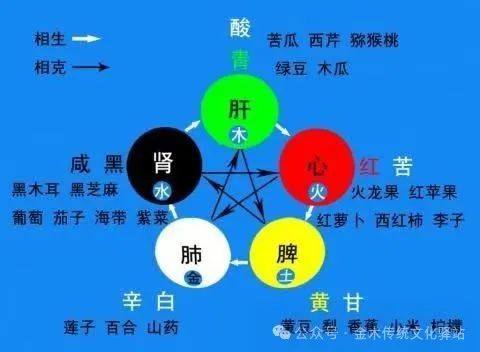
4. The Five Colors, Five Grains, and Five Organs
1. The Liver is associated with the color green: It is advisable to eat brown rice, beef, jujubes, and sunflower seeds; green corresponds to the Liver, so to achieve a rosy complexion, one should not primarily rely on vegetarian food.
2. The Heart is associated with the color red: It is advisable to eat adzuki beans, dog meat, plums, and leeks; red corresponds to the Heart, so to achieve a complexion like a peach blossom, one can supplement with foods rich in Vitamin C, such as tomatoes, oranges, and red apples.
3. The Lung is associated with the color white: It is advisable to eat wheat, lamb, apricots, and leeks; white corresponds to the Lung, so to achieve fair skin, one can regularly consume protein-rich foods like soy milk and milk.
4. The Spleen is associated with the color yellow: It is advisable to eat soybeans and chestnuts; yellow corresponds to the Spleen, so those with a dull complexion can supplement with yellow, sweet-tasting foods like carrots and egg yolks.5. The Kidney is associated with the color black: It is advisable to eat meat, peaches, and scallions; black corresponds to the Kidney, so those with darker skin should eat less food with excessive color additives.
5. The Five Organs and the Five Senses
1. The Nose is the organ of the Lung: The shape of the nose is governed by the stomach Qi, and the nostrils are governed by the Lung Qi, so the Lung opens to the nose. The nose is the organ of the Lung, and any illness of the Lung will first manifest in the nose. Here, the nose primarily refers to the inside of the nostrils; if the Lung is hot, the nostrils will emit hot air; if the Lung is cold, the nostrils will emit cool air. For example, when a person has a lung disease, symptoms like wheezing and flaring nostrils will appear.
2. The Eyes are the organ of the Liver: The Liver opens to the eyes, and liver diseases will manifest in the eyes. Generally, individuals with liver diseases will have bluish corners of the eyes. If a child is frightened, blue veins or bruises may appear on the bridge of the nose, which is also related to the Liver. In the correspondence of the five colors and five organs in TCM, the Liver corresponds to the color green. This green is not the green of grass or leaves but rather a bluish color. The Liver is generated from Kidney Water, and this bluish color is a transitional color between black and green.
By the way, if a person does not take care of their body in winter, when spring arrives, the Qi mechanism will not be able to rise, leading to illness. Therefore, understanding the correspondence between colors and organs is beneficial for health preservation. We can often make judgments about the body’s condition by observing changes in facial color.3. The Lips are the organ of the Spleen: The Spleen opens to the mouth, and the lips are the organ of the Spleen. Individuals with Spleen diseases will exhibit symptoms like yellow lips or yellowing around the lips, chapped lips, and bleeding, all caused by excessive Yangming dryness and heat.
4. The Tongue is the organ of the Heart: The tongue is the organ of the Heart. When the heart is ill, symptoms like a stiff tongue or a curled tongue will generally appear. Miscommunication and frequent verbal errors are also signs of insufficient Heart Qi. The Huangdi Neijing states: “Those with heart disease will have a curled tongue and red cheeks.” Red cheeks indicate heart disease, and the cheekbones will appear red. In addition to the cheekbones, we should also pay attention to the area between the eyebrows, as heart disease can also manifest there.
The area between the eyebrows is located between the two eyebrows. If this area suddenly turns red, especially in a pattern resembling a flower, it indicates that the spirit is scattering, and we should be particularly cautious. This is called “fortune and misfortune are in the balance,” and it may indicate a sudden serious illness.Blackening of this area is also not a good sign. From the perspective of TCM, this indicates that water Qi is overwhelming the heart, meaning there is too much Kidney Water, which is restraining Heart Fire.
5. The Ear is the organ of the Kidney: The ears are the organs of the Kidney. Any ear disease will be related to the Kidney. The Huangdi Neijing states, “The Kidney opens to the ears.” Individuals with Kidney diseases may experience symptoms like deafness or tinnitus. The five senses are closely related to the five organs, and understanding the changes in the five senses can help us discover hidden diseases in the five organs. Therefore, we must always pay attention to changes in the five senses to be aware of the corresponding conditions of the five organs.
Specific methods for health preservation related to the five senses are simple: close your eyes often to nourish the spirit; speak less to nourish the heart; breathe steadily to nourish the lungs; enjoy delicious food to nourish the mouth; avoid unnecessary distractions and listen only to what is appropriate to nourish the ears.
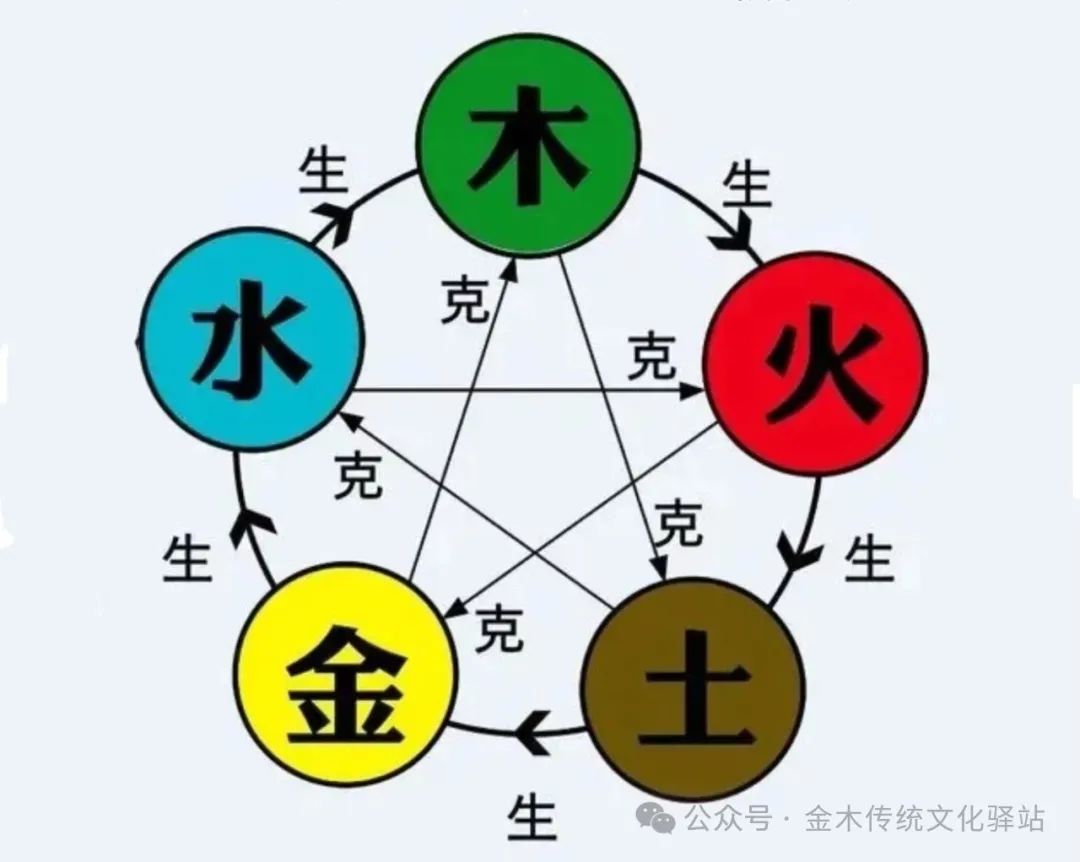
6. The Five Emotions and the Five Organs
1. The Heart is associated with Joy: “The Heart is associated with Joy” refers to the physiological function of the heart and its emotional state being related to joy. The Suwen states: “Joy harmonizes Qi and allows the spirit to flow freely, benefiting the Ying and Wei.” The process of joy is akin to the release of energy (both mental and physical) in the body, and the released energy forms the original driving force, initiating new mental activities and governing bodily vitality, creating new achievements.
For example: it can enhance the vitality of the brain and the entire nervous system, fully utilize the body’s potential, improve the efficiency and endurance of mental and physical labor, making life and work feel enjoyable and confident, thus appearing light, strong, agile, accurate, and energetic; it can strengthen the muscular movements of the heart and blood vessels, accelerate blood circulation, and enhance metabolic levels; it can expand the lungs, strengthen respiratory movements, increase lung capacity, and facilitate the exchange of carbon dioxide and oxygen; it can enhance the movement of digestive organs, increase the secretion of digestive juices, thereby improving appetite, aiding digestion, and promoting metabolism.
2. The Liver is associated with Anger: Anger is a strong emotional response to external stimuli and is a negative emotional stimulus. Anger is most closely related to the Liver, hence the phrase “the Liver is associated with Anger.” On one hand, excessive anger can harm the Liver, leading to abnormal Qi flow, excessive Liver Qi, and blood surging with Qi, which can manifest as a red face, irritability, and in severe cases, can lead to vomiting blood, nosebleeds, sudden fainting, or loss of consciousness. On the other hand, if the Liver fails to regulate, it can also lead to emotional instability, manifesting as irritability and restlessness.
3. The Spleen is associated with Worry: The Spleen is associated with worry and contemplation. Worry is a state of mental activity characterized by deep thought and consideration. The emotional activities of thinking are primarily expressed through the Spleen. Worry is a state of highly concentrated thought and consideration.
When a person is immersed in thought or anxiety, they often experience a lack of appetite and food may seem tasteless. Some women may experience reduced menstrual flow or irregular periods due to work stress and intense concentration, which aligns with the Spleen’s function of governing blood.
4. The Lung is associated with Grief (Sadness): Ancient physicians observed that the Lung is the primary organ expressing human grief and sadness. When a person cries due to sorrow, tears flow, which is mucus secreted by the Lung. When a person cries, the Lung Qi is abundant, and mucus secretion increases, and since the Lung opens to the nose, tears flow from the nose. The Lung governs Qi and is the master of sound; grief and sadness can also lead to hoarseness and rapid breathing. The Lung governs the skin, so grief can lead to increased facial wrinkles.
5. The Kidney is associated with Fear: Fear is associated with the Kidney, which is the primary organ expressing fear. Fear is a mental state of being afraid of things, which is a negative stimulus to physiological activities. The Suwen states: “Fear causes Qi to descend, and shock causes Qi to become chaotic.” This indicates that the stimulus of fear can adversely affect the movement of Qi in the body. “Fear causes Qi to descend” means that in a state of fear, the Qi in the upper body becomes blocked, leading to fullness in the lower body, and in severe cases, can cause incontinence. “Shock causes Qi to become chaotic” means that normal physiological activities can be temporarily disrupted due to panic, leading to symptoms like mental instability and confusion.
7. The Five Seasons and the Five Organs
1. Spring is suitable for ascending and nourishing: In spring, Yang Qi begins to emerge, the earth revives, and all things grow upward. It corresponds to the Liver, and according to the characteristics of spring, one should use ascending and dispersing products like mulberry leaves, chrysanthemum, and ginger to fully mobilize the body’s Yang Qi, harmonizing Qi and Blood.
2. Summer is suitable for cooling and nourishing: Summer is hot, with excessive fire evil, and all things flourish. It corresponds to the Heart, and during summer, the body’s organs and Qi and Blood are vigorous. One should use light and cooling products like honeysuckle, lotus leaves, and lotus seeds to regulate the body’s Yin and Yang Qi and Blood.
3. Late summer is suitable for light nourishment: Late summer is the transition between summer and autumn, with heat descending and humidity rising. It corresponds to the Spleen, and one should use light and draining products like adzuki beans, mung beans, and patchouli to benefit the Spleen and achieve a source for Qi and Blood generation.
4. Autumn is suitable for cooling nourishment: In autumn, Yang Qi retracts, and Yin Qi grows, with dry weather. It corresponds to the Lung, and at this time, the five organs have just relaxed from the vigorous metabolism of summer. One should use products like lily and black sesame to nourish Yin and generate fluids to regulate the dysfunction of the organs from summer.
5. Winter is suitable for warming nourishment: In winter, the weather is cold, and Yang Qi is deeply hidden. It corresponds to the Kidney, and one should use warming and nourishing products like longan, walnut kernels, and donkey-hide gelatin to replenish the body’s Qi and Blood deficiency, ensuring the organs’ Qi and Blood are vigorous and adapting to changes in the natural environment.
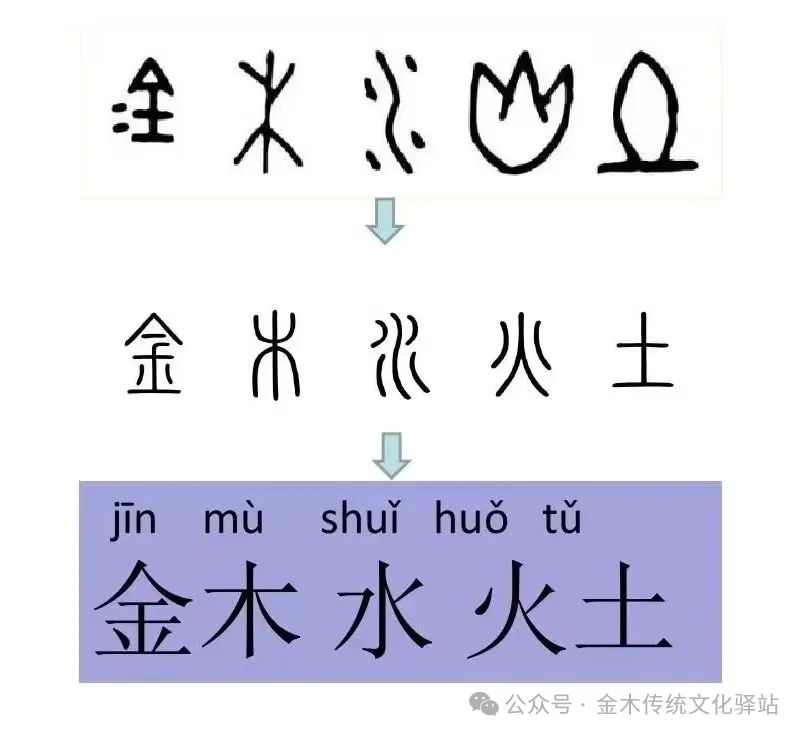
8. The Five Fluids and the Five Organs
Five types of secretions or excretions are referred to as the Five Fluids: sweat, mucus, tears, saliva, and spittle. The Five Fluids are generated by the five organs: the Heart produces sweat, the Lung produces mucus, the Liver produces tears, the Spleen produces saliva, and the Kidney produces spittle. The Five Fluids are generated by the five organs and belong to them, hence they are called the Five Organs’ Fluids, also known as the Five Organs’ Five Fluids.
The Five Fluids belong to the category of body fluids, all generated from body fluids, distributed among the organs’ openings, playing roles in nourishing, moistening, and regulating fluid metabolism. The generation, distribution, and excretion of the Five Fluids occur during the vaporization process of body fluids, resulting from the combined actions of multiple organs, especially the Lung, Spleen, and Kidney.
However, the five organs are the core of the organ imagery theory, thus sweat, mucus, tears, saliva, and spittle are classified under the five organs. Hence it is said: “In a person’s body, there are mucus, tears, saliva, spittle, urine, and feces, all belong to the transformation of water, and are emitted through the nine openings” (from the “Record of Questions”). “Sweat and urine can both be called body fluids” (from “Notes on Medical Thoughts: Qi, Blood, and Spirit Theory”). The relationship between the five organs and the five fluids is the unity of overall regulation and local regulation during the metabolism of body fluids.
1. Sweat is the fluid of the Heart:
What is sweat? “Yang added to Yin is called sweat” (from the “Suwen: Theory of Yin and Yang”). “Yang” refers to the Yang Qi in the body; “Yin” refers to the Yin fluids in the body. The phrase “Yang added to Yin is called sweat” means that sweat is the liquid that is transformed from body fluids through the vaporization of Yang Qi, expelled from the body.
The secretion and excretion of sweat also rely on the opening and closing actions of Wei Qi on the pores. When the pores are open, sweat is excreted; when the pores are closed, there is no sweat. Since sweat is transformed from body fluids, and blood and body fluids originate from the same source, there is a saying that “sweat and blood share the same source.”Blood is also governed by the Heart, and sweat is the fluid of blood, vaporized into sweat, hence it is called “sweat is the fluid of the Heart.”
As Li Zhongzi said: “What the Heart stores internally is blood, and what is emitted externally is sweat; sweat is the fluid of the Heart” (from “Essential Readings in Medicine: Sweat”).
Due to the close physiological relationship between sweat and blood, they also influence each other pathologically. In terms of the relationship between sweat and blood, excessive sweating can deplete blood and damage body fluids.
Conversely, when body fluids are deficient, blood is low, leading to insufficient sources of sweat. Therefore, in clinical practice, when blood deficiency symptoms appear, one should be cautious in using sweating methods. The principle is that “to deplete blood is to have no sweat, and to deplete sweat is to have no blood.” In terms of the relationship between sweat and the Heart, excessive sweating can deplete the Heart’s Qi and blood, leading to symptoms like palpitations and anxiety.
Since sweating is the result of the evaporation of Yang Qi from body fluids, excessive sweating can also harm a person’s Yang Qi, leading to a critical condition of Yang depletion. Conversely, when the Heart’s Qi and blood are insufficient, it can also cause pathological sweating, such as Heart Qi deficiency leading to spontaneous sweating, or Heart Yin deficiency leading to night sweats.2. Mucus is the fluid of the Lung:
Mucus is the secretion from the nose, which serves to moisten the nasal passages. The nose is the opening of the Lung, and the Five Organs generate fluids, with the Lung producing mucus. When the Lung’s physiological function is normal, mucus moistens the nasal passages without flowing out. If the Lung is affected by wind-cold, clear mucus will flow from the nose; if affected by wind-heat, turbid mucus will flow; if the Lung is dry, there may be little or no mucus.
3. Saliva is the fluid of the Spleen:
Saliva is the mouth’s fluid, with the clearer part referred to as saliva: Saliva serves to protect and cleanse the mouth. During eating, saliva is secreted in larger amounts, moistening and dissolving food, making it easier to swallow and digest.
Under normal circumstances, saliva rises in the mouth but does not overflow. If the Spleen and Stomach are not harmonious, it often leads to a sharp increase in saliva secretion, resulting in excessive salivation, hence it is said that the Spleen governs the fluid of saliva.
4. Tears are the fluid of the Liver:
The Liver opens to the eyes, and tears flow from the eyes. Tears serve to moisten and protect the eyes. Under normal circumstances, the secretion of tears is moistening and does not overflow, but when foreign objects enter the eyes, tears can be secreted in large amounts to cleanse the eyes and expel foreign objects.
In pathological conditions, abnormal tear secretion can occur. For example, if there is insufficient Liver Yin Blood, tear secretion decreases, leading to dry eyes; if there is wind-heat or Liver channel damp-heat, there may be increased eye discharge and tearing in the wind. Additionally, in cases of extreme sorrow, tear secretion can also increase significantly.
5. Spittle is the fluid of the Kidney:
Spittle, like saliva, is the mouth’s fluid. The thicker part is referred to as spittle, while the thinner part is referred to as saliva.
Saliva is the fluid of the Spleen, while spittle is the fluid of the Kidney: In addition to moistening and dissolving food, making it easier to swallow, and cleansing and protecting the mouth, spittle also nourishes Kidney essence. Since spittle is transformed from Kidney essence, excessive or prolonged spitting can deplete Kidney essence, which is why practitioners often swallow spittle to nourish Kidney essence. The Five Elements, Five Organs, Five Tastes, Five Colors, Five Senses, Five Emotions, Five Seasons, and Five Fluids are all interrelated and inseparable. Once you grasp their interrelationships and apply them to daily health preservation, you will surely achieve a healthy body!
Disseminating knowledge of TCM health preservation, promoting traditional Chinese culture, sharing health concepts, and conveying care, passing on health knowledge and traditional culture to more friends…
People are great because they have dreams; we are different because we have love.
Liu Qingning: 182 7127 1941 or (WeChat ID)
Yang Shunsong: 138 7171 7447 or (WeChat ID)


